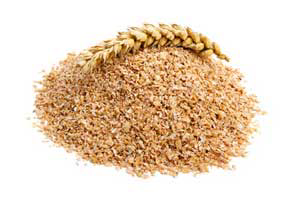Fermentation, extrusion enhance wheat bran for pigs

Fermentation as well as extrusion improves the nutritional value of wheat bran. However, fermentation of wheat bran seems to be the more potent than extrusion.
These were some of the conclusions of a recent research by scientists from Austria and Switzerland. Since wheat can be regarded as the most frequently produced grain worldwide after corn, they conducted a pig digestibility trial to investigate the effects of fermentation or extrusion of wheat bran included in a basal diet. Results measured included coefficients of total tract apparent digestibility (CTTAD) regarding dry matter, organic matter, crude protein, crude fibre, ether extract, starch, energy, phosphorus and calcium.
The scientists concluded that fermented and extruded wheat bran exert some significant influence on the apparent total tact digestibility of several essential nutrients, minerals and energy when included in a basal diet. In particular, fermentation appeared to be the more potent strategy. The researchers wrote that “as positive effects on the coefficients of total tract apparent digestibility of phosphorus and calcium could only be observed in the feeding group with fermented wheat bran.”
The researchers reached this conclusion having done an experiment, in which nine growing pigs were allocated to a 3×3 Latin square design to measure the CTTAD of the basal diet containing different modified wheat bran variants, and therefore to demonstrate relative differences in the CTTAD among the diets as a result of wheat bran modification.
The wheat bran was used in native form, as fermented bran ensiled with Lactobacillus paracasei and Lactobacillus plantarum and as extruded wheat bran (EWB).
Wheat bran variants were included at 200 g per kg in a phosphorus-deficient basal diet.
The obtained results show that the CTTAD of dry matter was increased when feeding the diet with fermented wheat bran (+2%), instead of wheat bran in its native form.
Likewise the CTTAD of organic matter was also increased with fermented wheat bran (+2%), compared to wheat bran in its native form.
Also the CTTAD of crude fibre (+9%) was improved with fermented wheat bran as well as with extruded wheat bran, related to wheat bran in its native form.
The CTTAD of ash was improved with fermented wheat bran (+14%) compared to wheat bran in its native form.
Correspondingly, the CTTAD values of phosphorus and calcium were also elevated when feeding the fermented wheat bran diet. Phosphorus digestibility was increased in the fermented wheat bran feeding group compared to those groups fed with wheat bran in its native form (+35%) and extruded wheat bran (+53%).
Regarding the calcium digestibility, similar results were obtained.
While the CTTAD of energy was increased in the fermented wheat bran (+3%) and extruded wheat bran (+2%), feeding groups compared to that of wheat bran in its native form, the N-balance and the CTTAD of starch were not affected by the treatments.
Nevertheless, the CTTAD of ether extract was enhanced in the fermented wheat bran treatment group (+40%), and was also improved by extrusion (+30%) compared to the treatment offering wheat bran in its native form.
The research was performed by M Kraler, K Schedle, KJ Domig, H Michlmayr and W Kneifel of the University of Natural Resources and Life Sciences (BOKU), Vienna, Austria and D. Heine from Buehler AG, Switzerland. It was published in the magazine Animal Feed Science and Technology.











